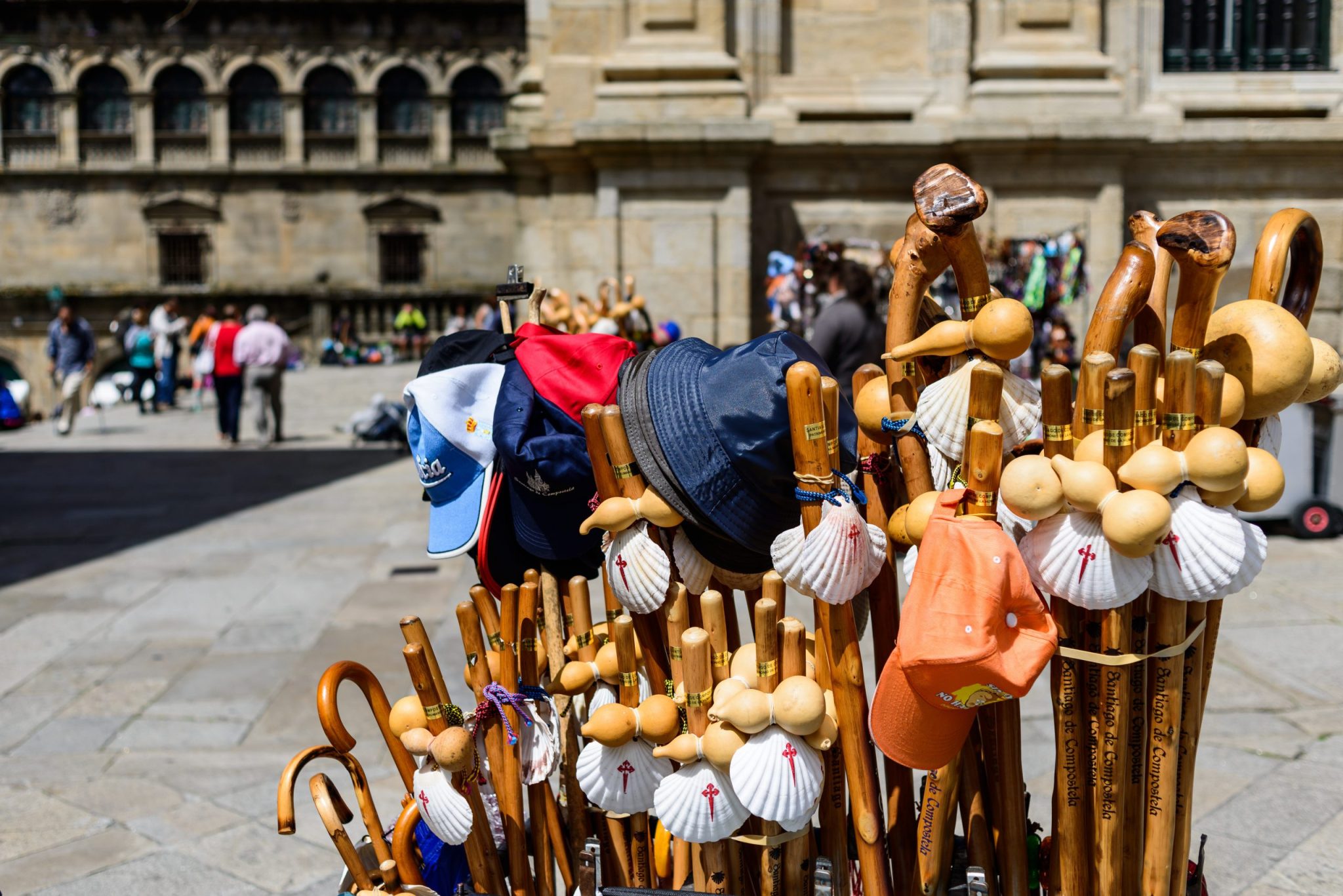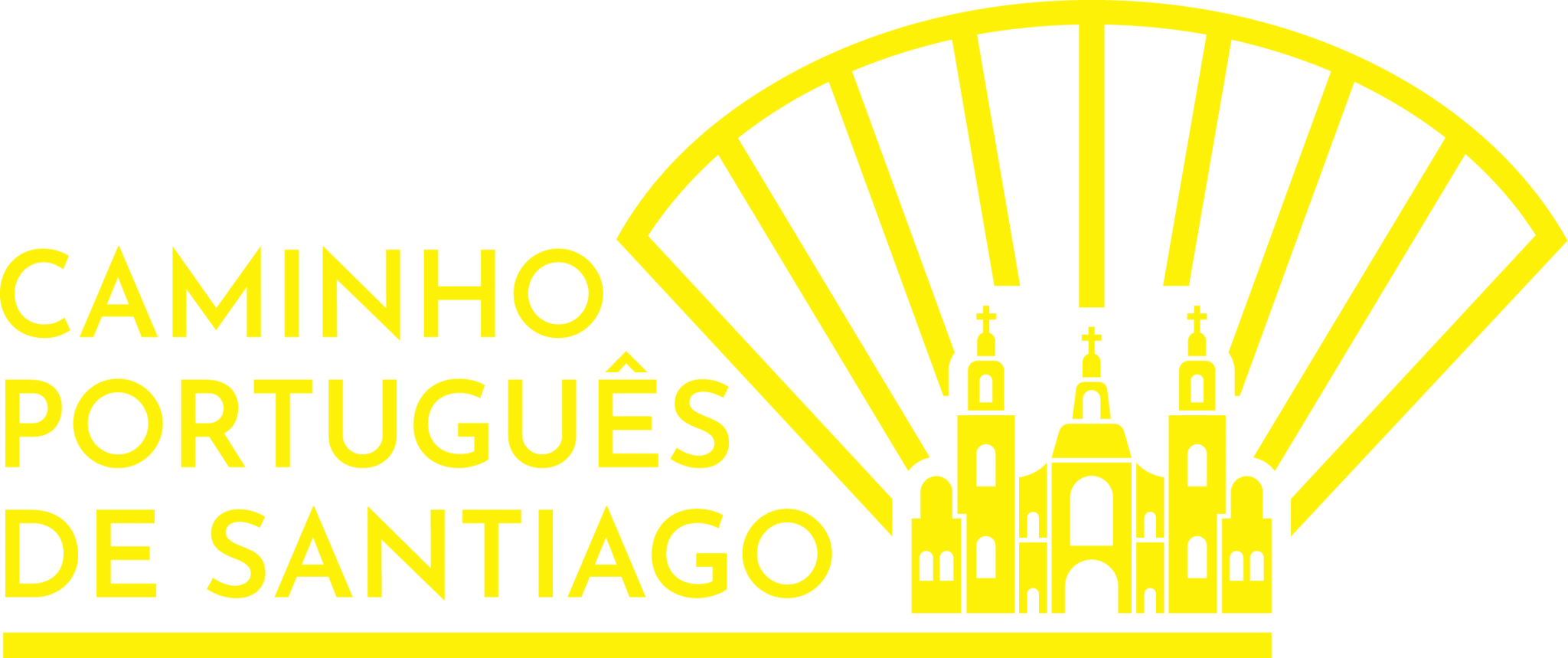10 symbols of the Camino de Santiago

The Camino de Santiago, like a nation, has its symbols. However, instead of flags and anthems, it has greetings to identify who the pilgrims are, arrows and much more!
Today, we bring you 10 symbols of the Camino de Santiago. These physical representations, in which we immediately recognize ourselves, are as simple as the stones on top of each other throughout the crossing to the yellow arrows that are now as well known as the Vieira.
So, we wrote this article, to learn more about these images, sounds and documents: where they come from and why. Happy reading!
1) Bom Caminho, Ultreia e Suseia.
Like the national anthem, the sounds and words that make up the Camino are also symbols of this journey. Whenever we meet a pilgrim in Portugal, we are greeted with a friendly Good Way, or Buen Camino if they are foreigners. Portuguese speakers quickly understand what it means. However, it can be confusing for first-time walkers with no experience – as pilgrim author Agostinho Leal reports in his book: Memoirs of a Pilgrim on the Camino de Santiago de Compostela.
“(…) I decided to sit down to rest for a while on some stone benches that were there. At that moment a couple of foreign pilgrims passed by and greeted me:
–Buen camino!
I still did not know the greeting, but I sensed the friendly intention. Thinking they were Spanish, I responded with the same friendliness:
– It’s not bad at all, the problem is the traffic. But it will get better when we get out of the urban area.”
Ultreia and Suseia, on the other hand, have religious origins.They are a statement followed by an answer. Someone tells us Ultreia, we answer Suseia. But why? It was part of the tradition of our favorite route for pilgrims to go singing a part of a book called Codex Calixtinus. Both have different meanings. The first one, Ultreia, means, in Latin, “farther”. The second, on the other hand, is “higher”. Although they are not used as much today, now when someone greets you with these words you already know what to say.
Ultreia et Suseia!
2) Yellow arrows.
The origins of the yellow arrows, unlike most of the symbols reported here, are recent. It all begins with the research of Father Elias Valinã, a historian of the Way to Santiago who wrote a thesis on the subject.
As an enthusiast of the topic, and realizing that pilgrims got lost several times when making the route, he decided to trace the journey to the capital of Galicia with, you guessed it, the yellow arrows. Now, although they have an interesting history, the reason for the color is not just a coincidence. First, yellow is a color that stands out easily. Second, it was already the color used to mark paths in the territory. Legend has it that the priest asked the construction workers for used paint and, so as not to be out of place, he always kept the same color.
This pioneer of the Way was not only in charge of signaling, but also responsible for creating associations to revive the spirit of the Way that, in those years, was forgotten. If you want to know more about this, you can visit the land O Cebreiro, since the priest is buried there.
3) Stone markers.
They are our odometer along the way. Made of stone or cement, they are always decorated with the distance remaining to reach the Galician capital and an arrow pointing the direction. They are one of the pilgrims’ favorite symbols, and there is no shortage of pictures on the internet to demonstrate this.
4) The Shell and the Scallop.
The shell is the great symbol of the Way. In ancient times, it was with this shell that the pilgrim’s journey to Santiago de Compostela was proven. It was given to the priests of the city of Jesus’ apostle as a reward for the completed journey.
It is also closely linked to the religious history of the path, as you can read here.
5) The cross of Santiago.
This is a Latin Cross and has direct links to the life story of Santiago. With its sword figure it can signify a trinity of representations. First, the manner in which Santiago was killed. Beheaded with a blade. Second, the taking of the sword in the name of Christ, as in the crusades. And even the character of Santiago.
6) The staff.
Today replaced by poles, it was the pilgrims’ way of making their passage as comfortable as possible. However, instead of being bought at the most handy sports store, they were made from branches, tree sticks, and other wood found along the way. But they didn’t just serve for supporting walkers, they were also a form of protection from animals or even unwanted people.
7) The Botafumeiro.
The Botafumeiro may be the largest censer in the world, weighing 53 kilograms and standing 1.5 meters tall. One of the most beloved symbols of the entire route, in addition to its natural beauty, it was created especially for pilgrims. And here, it had two functions: a purifier for those who completed the path; also, another, more practical explanation for this scent dispenser is that it worked as a spray to “clean” the smell of sweat from people who had just done a month-long walk.
8) A Compostela.
Although the shell was the first way to prove the pilgrimage, it soon became apparent that it could be easily counterfeited, and at one point they were even sold at the city gates. To put an end to this situation, the pope started writing letters of evidence. The genesis of the Compostela. Today, it can be collected on arrival in Santiago at the Pilgrim’s Office.
9) The pilgrim’s credential.
This credential, which can be requested at cathedrals, hostels and pilgrim associations, is what proves that you are doing the Camino de Santiago. Without it, you can’t enter the albergues, you’re not entitled to pilgrim menus or the Compostela.
For this you need 2 stamps per day. It sounds like a lot, but it’s not, since all churches have it (or almost all), many cafes too, and especially hostels. Just show that you sleep in one place, pray in another, and you’re done.

10) The Jacobean year.
This year begins in 1121, the year in which the Pope gave the Church of Santiago the ability to grant total forgiveness to pilgrims who visited Santiago’s tomb in years when July 25th was a Sunday. With 14 occurrences in each century, this is a rare event. But why July 25th? It is the date when the apostle after whom the Way is named was beheaded in Jerusalem
10 symbols of the Camino de Santiago.
These are just some of the best-known symbols of the Way to Santiago, and there are many others. What are your favorites ones?
